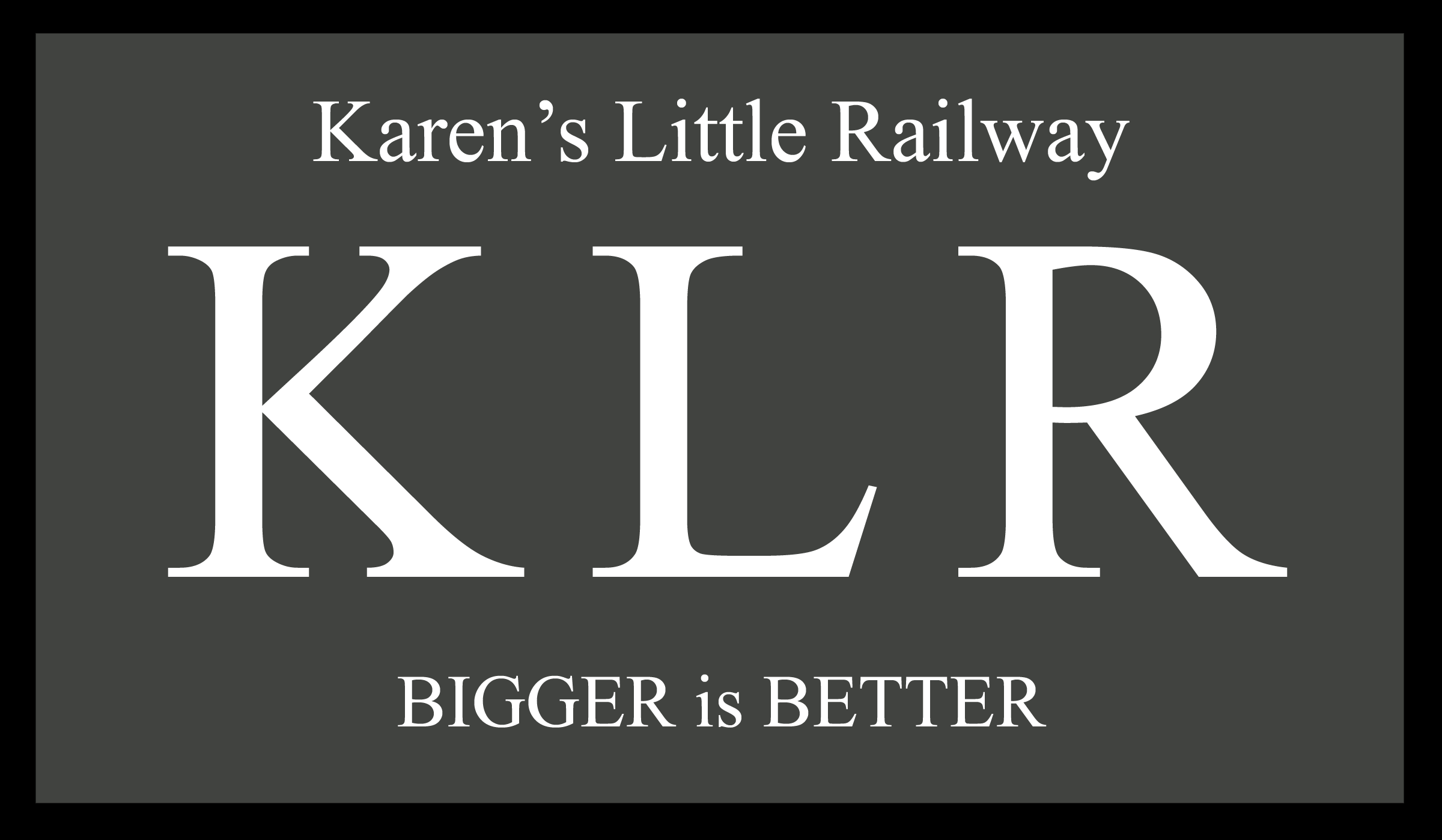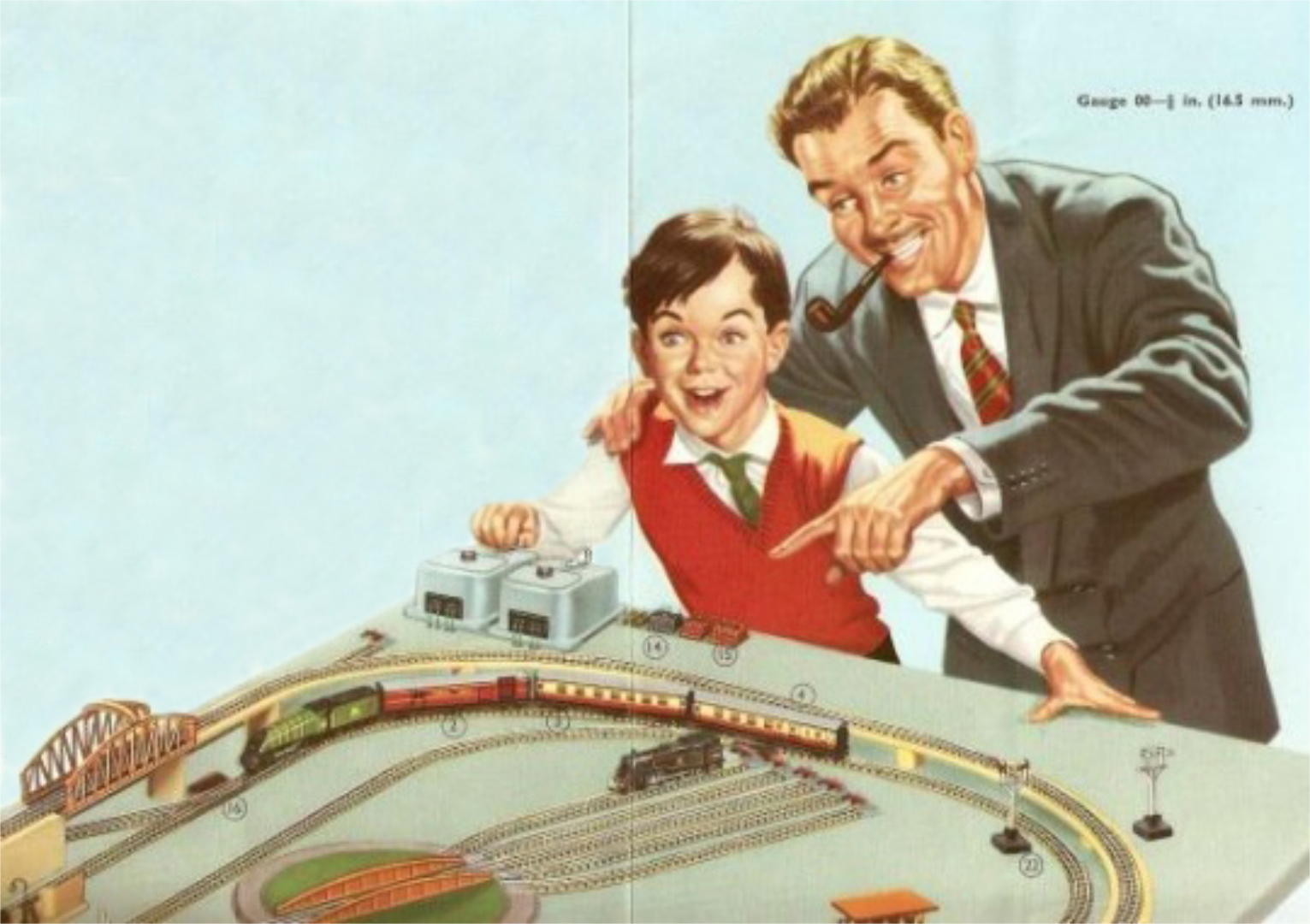History
This is an outline of our personal journey leading to the building of Karen's Little Railway. From toy trains, via vintage clockwork & electric models, to live steam trains in the garden and a miniature railway in the park.
Early Railway Influences
We both have steam railway enthusiast Dads, so inevitably we share early memories of visiting preserved railways. Karen remembers much waiting around on cold, usually wet, windswept platforms for trains that seemed to take forever to arrive.
Rupert was more infected (afflicted?) with the railway bug, soaking up the sights and smells of steam railways, and even back then building railways in miniature. He can remember spending a lot of time at playgroup and home playing with the 'red railway' (a plastic version of the wooden 'Brio' railway toys), progressing on to his Dad's old Hornby Dublo trains and later involvement in building an 0 gauge garden railway at the family home.
A Small Garden Railway
Once we had set set up home together and had a couple of children (boys; Ruarí & Séamas) we decided that the next addition should be our own garden railway. At that time we considered our small (30 feet X 15 feet) urban garden just big enough to squeeze in a 32mm (1 1/4 inch) gauge railway. We ran both vintage clockwork 0 gauge (7mm to the foot scale) and more modern live steam narrow gauge (16mm to the foot scale) trains that both fit on the same size track. The railway was a simple oval around the garden with a passing loop, a couple of bridges and a short tunnel. This feature of our garden caused many a neighbour to pop their head over the fence!
Now that we know that some 7 1/4 inch gauge locomotives and stock negotiate curves as tight as 6 feet (or two metres) radius, albeit with some gauge widening, we might take a different approach.
Park Railway
Having built the 0 gauge garden railway, attention moved to something a little bigger. A model engineering society had built a mixed gauge miniature railway in the local park. Much to our dismay (particularly on the part of our eldest son, Ruarí) this railway had fallen into disuse but the track still appeared in reasonable condition. At this time (2001) there was a large project afoot to restore various aspects of the park, so it was an opportune moment to try and get the railway running again.
Rupert managed to gather together a small group of volunteers who succeeded in resurrecting the railway, having convinced the local Council that it was a viable self financing project. Even though we were soon to move on, the Alexandra Park Miniature Railway continued to operate as a 5 inch and 7 1/4 inch mixed gauge railway until 2015.
Happily the railway more recently re-opened following some infrastructure improvements as a 7 1/4 inch gauge only line run by the same operators as the much more well known Hastings Miniature Railway. It is now known as the Alexandra Park Woodland Railway. We are glad to see the railway will operate more often and still believe this is a great asset for the park, the local community and railway enthusiasts alike. Now we live about 600 miles away so we no longer have any connection to the railway, but if you want more information we suggest you visit the Alexandra Park Woodland Railway Facebook page, or better still go and visit both railways if you are in that part of the world.
Karen's Little Railway
Ten years on and having moved to Scotland, we had the space to realise our dreams of a bigger railway and started researching what equipment was available.
A large diesel shunter was for sale at Station Road Steam. Being in need of restoration and quite large the only option was to go and collect it. This meant a journey south to inspect and collect what would become KLR No.5 'Helen', with the proviso that we wouldn't be tempted by any of the 'small' steam engines then advertised on the internet.
Whilst at Station Road Steam enjoying Mike Palmer's hospitality and seeing his interesting stock, Karen wandered off and noticed a larger than most 7 1/4 inch gauge steam engine that she was very impressed with. She fell in love with it, and to cut a long story short we ended up with a steam engine as well as the diesel and the beginnings of our railway.
We reasoned that by modelling a narrow gauge locomotive the miniature version is a bigger scale than a model of a standard gauge locomotive running on the same gauge miniature track. Gradually this idea evolved into making a minimum gauge railway - a genuine 12 inch to the foot narrow gauge railway rather than a miniature of something else. The dimensions of the equipment are made as large as possible relative to the track gauge, while still providing enough stability to keep it from tipping over. Controls can be made big enough for anybody to use. Carriages are big enough to sit in (as opposed to the sit astride types often found on miniature railways) and Karen has plans to design and build a wheelchair accessible version. This is important to her because she suffers from Multiple Sclerosis. As 7 1/4 inch gauge is the smallest practical size to do this, we decided the motto bigger is better was appropriate for Karen's Little Railway.
This is how Karen became the instigator of the idea for a 'big little' (or should that be little big?) minimal gauge railway. Since the steam engine had the initials KLR on it's cab and tender it became known as 'Karen's Little Railway'.
